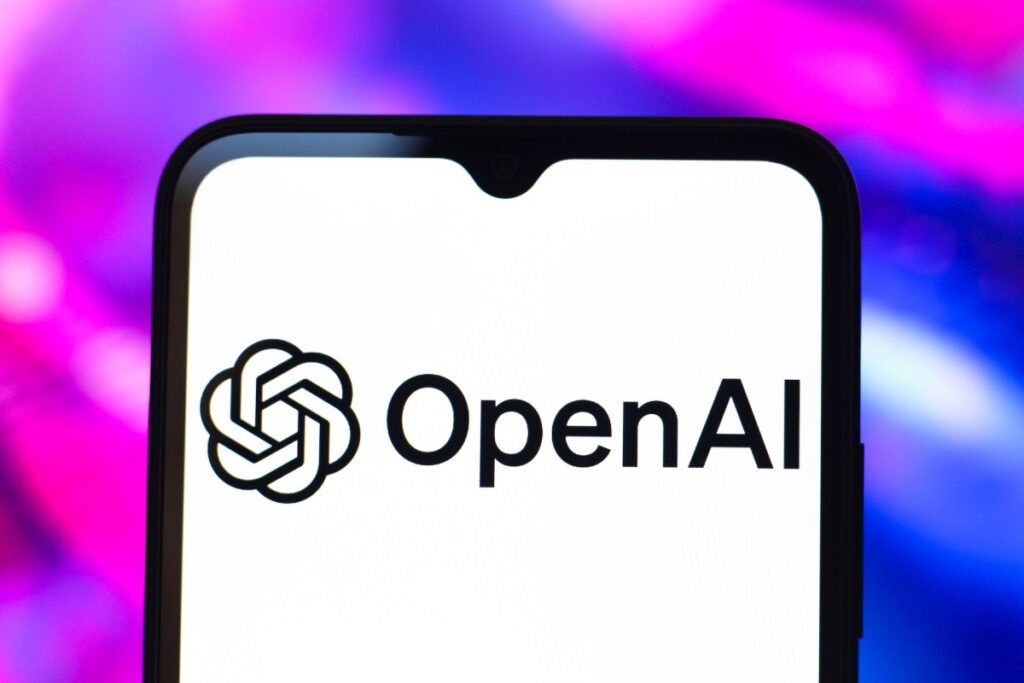
<strong>Image Credits:</strong>Thomas Fuller / SOPA Images / LightRocket / Getty Images
OpenAI Nonprofit Control: Company Reverses Course on Corporate Structure
Table of Contents
- OpenAI’s Recent Decision on Nonprofit Control
- Understanding OpenAI’s Organizational Structure
- Transition to Public Benefit Corporation Model
- Influence of Regulatory Conversations
- Historical Context of OpenAI’s Governance
- Implications for AI Governance and Industry Standards
- Stakeholder and Industry Reactions
- Future Outlook and Potential Developments
OpenAI’s Recent Decision on Nonprofit Control
In a significant policy reversal, OpenAI has announced that its nonprofit division will maintain control over its for-profit business operations. This decision comes after the company had previously indicated plans to transition to a fully for-profit organizational structure. The announcement represents a fundamental shift in the company’s governance approach and has important implications for how the influential AI developer will balance commercial interests with its stated mission of ensuring artificial general intelligence (AGI) benefits humanity broadly.
According to an official statement published on the company’s website, OpenAI’s business wing, which has operated under nonprofit oversight since 2019, will convert to a public benefit corporation (PBC). Crucially, the nonprofit entity will not only control this new corporate structure but will also remain a major shareholder in the business, ensuring continued mission alignment and governance oversight.
Official Statement
“OpenAI was founded as a non-profit, and is today overseen and controlled by that nonprofit,” the company stated in its blog post. “Going forward, it will continue to be overseen and controlled by that nonprofit.”
Understanding OpenAI’s Organizational Structure
OpenAI’s organizational structure has evolved significantly since its founding in 2015 as a nonprofit research laboratory. The company was initially established with a $1 billion commitment from donors including Elon Musk, Sam Altman, and others who sought to ensure that artificial general intelligence (AGI) would be developed safely and for the benefit of humanity rather than concentrated in corporate hands.
In 2019, OpenAI created a hybrid structure by establishing a for-profit entity (OpenAI LP) under the control of the original nonprofit (OpenAI Inc.). This restructuring was designed to help the organization attract the capital needed for large-scale AI research while maintaining its alignment with the nonprofit’s mission through a governance structure that placed ultimate control with the nonprofit board.
The current decision reaffirms and strengthens this model, ensuring that despite the commercial success of products like ChatGPT and DALL-E, the nonprofit’s mission of developing safe and beneficial AGI will continue to guide the company’s strategic decisions.
| Timeline | Organizational Change | Key Implications |
|---|---|---|
| 2015 | Founded as a nonprofit research laboratory | Established mission to develop safe AGI for humanity’s benefit |
| 2019 | Created for-profit subsidiary (OpenAI LP) under nonprofit control | Enabled greater capital investment while maintaining mission alignment |
| 2025 (Prior Plan) | Proposed shift to full for-profit structure | Would have potentially prioritized commercial interests |
| 2025 (Current Decision) | Commitment to nonprofit control, PBC transition | Balances commercial success with ethical governance |
Transition to Public Benefit Corporation Model
The newly announced structure will transform OpenAI’s business wing into a public benefit corporation (PBC). Unlike traditional corporations that prioritize shareholder returns above all else, PBCs are legally required to consider the impact of their decisions on society, workers, and the environment alongside financial factors. This corporate form creates a legal framework that aligns with OpenAI’s mission to develop artificial general intelligence that benefits humanity broadly.
In the United States, public benefit corporations represent a middle ground between pure nonprofits and standard for-profit companies. They must identify specific public benefits they aim to produce and report regularly on their progress toward these objectives. For OpenAI, this structure provides several advantages:
- Mission Protection – The PBC status creates legal obligations to consider the company’s mission alongside profit motives
- Accountability Framework – Regular benefit reporting creates transparency around how well the company is fulfilling its stated purpose
- Investment Flexibility – Unlike a pure nonprofit, a PBC can raise capital through traditional investment mechanisms
- Governance Continuity – The nonprofit’s control ensures consistent ethical oversight even as the business scales
- Stakeholder Consideration – PBCs must consider impacts on all stakeholders, not just shareholders
Public Benefit Corporation Framework
Public benefit corporations differ from B Corps, which are certified by the nonprofit B Lab. While B Corps undergo certification to meet standards of social and environmental performance, PBCs have their public benefit purpose written into their charter and are legally obligated to pursue it.
Influence of Regulatory Conversations
OpenAI’s decision appears to have been significantly influenced by discussions with government officials. The company specifically mentioned that it reached this conclusion “after hearing from civic leaders and engaging in constructive dialogue with the offices of the Attorney General of Delaware and the Attorney General of California.”
These consultations suggest that there may have been regulatory concerns about the company’s previously announced plans to shift to a for-profit structure. Delaware, where many U.S. corporations are registered for its business-friendly legal environment, and California, where OpenAI is headquartered, both have regulatory frameworks governing nonprofit organizations and their commercial activities.
The engagement with state attorneys general indicates that OpenAI’s governance decisions are being closely monitored by regulatory authorities, reflecting the growing recognition of AI development as an area of significant public interest requiring appropriate oversight. This regulatory attention is likely to increase as AI capabilities continue to advance and their societal impact grows.
Historical Context of OpenAI’s Governance
To fully understand the significance of OpenAI’s recent decision, it’s important to consider the historical context of the organization’s governance. Founded in 2015 with a commitment to developing artificial general intelligence (AGI) safely and for broad benefit, OpenAI was explicitly created as a counterbalance to concentrated AI development within profit-driven tech giants.
The company’s initial nonprofit structure reflected concerns about the potential risks of advanced AI systems being developed solely for commercial purposes without adequate safety considerations. Early backers, including Elon Musk, emphasized the importance of developing AGI as a “public good” rather than for private profit.
The 2019 creation of the for-profit subsidiary (OpenAI LP) represented a pragmatic recognition that developing increasingly advanced AI systems would require substantial computing resources and talent, necessitating greater capital than traditional nonprofit funding could provide. However, this restructuring incorporated specific governance safeguards, including:
- Capping investor returns at 100x their investment
- Ensuring the nonprofit board maintained control over the for-profit entity
- Establishing that the nonprofit’s mission would take precedence over profit maximization
- Creating a structure where the nonprofit could revoke licenses to the for-profit subsidiary
The recent decision to maintain nonprofit control while transitioning to a public benefit corporation model can be seen as a recommitment to these original principles, albeit in an evolved form that acknowledges the commercial success the company has achieved.
Implications for AI Governance and Industry Standards
OpenAI’s decision to maintain nonprofit control over its business operations has broader implications for AI governance and industry standards. As one of the leading developers of advanced AI systems, OpenAI’s governance choices influence how the entire industry approaches the balance between commercial objectives and ethical considerations.
This model of maintaining independent ethical oversight through a nonprofit entity could serve as a template for other AI companies concerned with demonstrating responsible development practices. It provides a structural answer to one of the central tensions in AI development: how to access the capital needed for cutting-edge research while ensuring appropriate guardrails against potential misuse or harmful applications.
The decision comes at a time when governments worldwide are actively developing regulatory frameworks for AI. OpenAI’s voluntary commitment to nonprofit governance may influence these regulatory discussions, potentially encouraging approaches that allow for industry self-regulation with appropriate oversight rather than more restrictive regulatory regimes.
Governance Innovation
OpenAI’s hybrid model represents an institutional innovation that may prove influential beyond the AI sector. It demonstrates how organizations developing powerful technologies with significant societal implications can create governance structures that institutionalize ethical considerations alongside commercial objectives.
Stakeholder and Industry Reactions
The announcement of OpenAI’s decision to maintain nonprofit control has elicited varied responses from different stakeholders in the AI ecosystem. While a comprehensive analysis of reactions is still emerging, several key perspectives are worth noting:
Investors and Commercial Partners: For investors in OpenAI, including Microsoft which has invested billions, the governance structure provides both reassurance about ethical oversight and potential concerns about profit maximization. The public benefit corporation model explicitly requires consideration of factors beyond shareholder returns, which represents a different investment proposition than a standard corporation.
AI Safety Advocates: Those concerned with the safe development of advanced AI systems are likely to view this decision positively, as it maintains independent ethical oversight of one of the world’s most capable AI systems. The nonprofit control helps address concerns about commercial pressures potentially leading to premature deployment of insufficiently tested AI technologies.
Industry Competitors: Other AI companies may find themselves under increased pressure to demonstrate similar governance safeguards, particularly as they develop more capable systems. OpenAI’s decision potentially raises the bar for what constitutes responsible AI development practices in the industry.
Policy Makers: Government officials and policy makers will likely view this development as a positive step toward responsible AI governance, though it may not diminish calls for formal regulation of AI development and deployment.
Future Outlook and Potential Developments
Looking ahead, OpenAI’s governance decision opens several important questions about the future of the company and the broader AI industry:
First, the practical implementation of this hybrid structure will be closely watched. How the nonprofit board exercises its control over the public benefit corporation, particularly around controversial decisions where ethical and commercial considerations may conflict, will reveal the true effectiveness of this governance model.
Second, as OpenAI continues to develop increasingly capable AI systems, the relationship between its governance structure and product decisions will become increasingly important. Will the nonprofit control lead to more cautious deployment strategies or different development priorities than would be seen in a purely commercial entity?
Third, this decision may influence how other AI companies structure themselves, particularly startups that are still defining their governance approaches. If OpenAI demonstrates that this model can support both ethical AI development and commercial success, other companies may adopt similar structures.
Conclusion
OpenAI’s decision to maintain nonprofit control while transitioning its business wing to a public benefit corporation represents a significant recommitment to its founding principles of developing artificial general intelligence that benefits humanity broadly. This hybrid governance model attempts to balance the capital requirements of advanced AI research with the ethical oversight needed to ensure responsible development.
By engaging with regulatory authorities and civic leaders in reaching this decision, OpenAI has demonstrated responsiveness to broader societal concerns about AI governance. The success or failure of this model will likely influence not only OpenAI’s future but also broader conversations about how to govern the development of increasingly powerful AI technologies.
As the company continues to develop and deploy advanced AI systems, the effectiveness of this governance structure in navigating the complex tensions between commercial objectives and ethical considerations will be closely watched by industry participants, policy makers, and the broader public.





